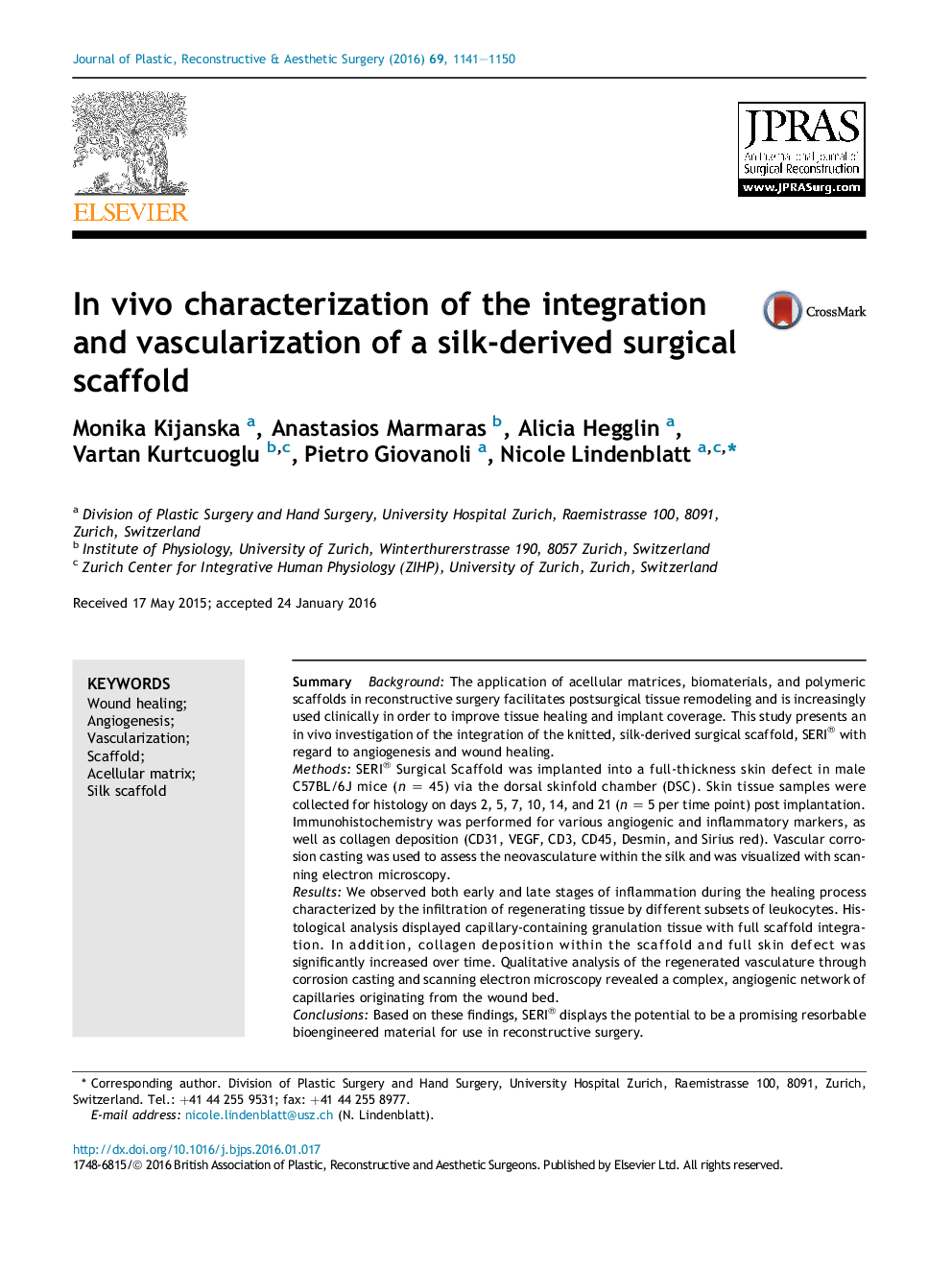| Article ID | Journal | Published Year | Pages | File Type |
|---|---|---|---|---|
| 4117023 | Journal of Plastic, Reconstructive & Aesthetic Surgery | 2016 | 10 Pages |
SummaryBackgroundThe application of acellular matrices, biomaterials, and polymeric scaffolds in reconstructive surgery facilitates postsurgical tissue remodeling and is increasingly used clinically in order to improve tissue healing and implant coverage. This study presents an in vivo investigation of the integration of the knitted, silk-derived surgical scaffold, SERI® with regard to angiogenesis and wound healing.MethodsSERI® Surgical Scaffold was implanted into a full-thickness skin defect in male C57BL/6J mice (n = 45) via the dorsal skinfold chamber (DSC). Skin tissue samples were collected for histology on days 2, 5, 7, 10, 14, and 21 (n = 5 per time point) post implantation. Immunohistochemistry was performed for various angiogenic and inflammatory markers, as well as collagen deposition (CD31, VEGF, CD3, CD45, Desmin, and Sirius red). Vascular corrosion casting was used to assess the neovasculature within the silk and was visualized with scanning electron microscopy.ResultsWe observed both early and late stages of inflammation during the healing process characterized by the infiltration of regenerating tissue by different subsets of leukocytes. Histological analysis displayed capillary-containing granulation tissue with full scaffold integration. In addition, collagen deposition within the scaffold and full skin defect was significantly increased over time. Qualitative analysis of the regenerated vasculature through corrosion casting and scanning electron microscopy revealed a complex, angiogenic network of capillaries originating from the wound bed.ConclusionsBased on these findings, SERI® displays the potential to be a promising resorbable bioengineered material for use in reconstructive surgery.
